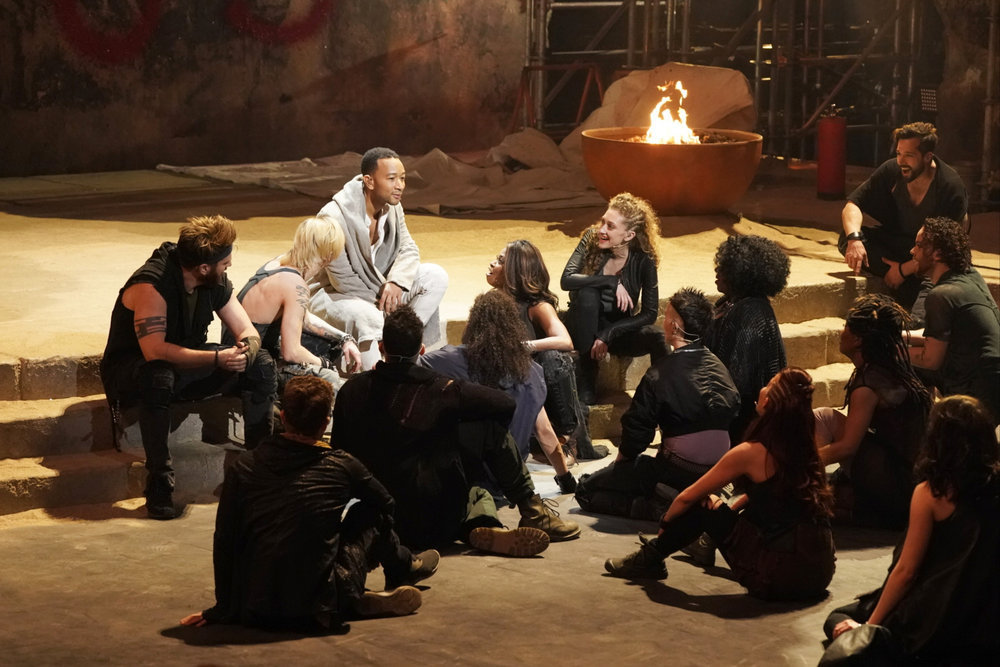
There are a number of interesting things about the monolithic W.E.B. Du Bois Library that rises above the University of Massachusetts campus. Immediately noticeable is its towering height and almost constant surrounding of gale force winds.
But this humble obelisk has more to it than its intimidating structure.
If you are one of the brave souls who deem themselves powerful enough to work your way up through the dizzying stairwells to your respective destination in the library, you will no doubt have spotted the characteristic and somewhat sporadically placed murals on display between floors.
You may have noticed the style of these murals varies constantly from floor to floor. Some are abstract while others seem more surreal, but there is one constant between all of these seemingly desultory works of craft: UMass students created them.
As with most good pieces of art, these murals have a story. From Sept 25 to 28, 1986, UMass was undergoing a special event, aptly named Mass Transformation. This project was the culmination of 10 months of planning that focused mainly on renovating the once dilapidated and apparently vandalized library.
Mass Transformation was a “campus wide movement to clean up campus and beautify it,” according to Leslie Button, associative director of library services.
The library was selected as a focus because it is a “very important intellectual center of campus, and people wanted to showcase it,” she said.
Over the course of a four-day extravaganza complete with festive horns and bells, the library was cleaned, painted, decorated and landscaped by way of volunteers. These volunteers included students, campus groups and even cash donors.
The library was constructed from 1971 to 1973, but the renovations made during Mass Transformation solidified the beginning of the learning annex we know of today.
While this staggering clean-up was successfully carried out in a tight and calculated manner, the Campus Awareness Committee of 1986 stated, “Although work on the Library is over, Mass Transformation is not.”
Here is where the murals come into play.
In 1986, Richard J. Talbot, the director of libraries at the time, created an ad hoc Murals Committee led by William Markey. The 40 paintings began sprouting up.
Two years later, with hopes of putting up more murals, Markey set up a competition for students’ murals to be installed on the stairway landings between floors, offering $250 to every student whose mural was selected.
In this project’s description, it was made clear that the murals were originally put up to combat offensive graffiti in the stairwells, and in this respect it was “phenomenally successful.”
Now names like Michelle Eichelman, Christopher Cronin or Holly Bandoni, which otherwise may have been lost in time, are preserved by art in the narrow climbing stairwells of the library.
Six months after Mass Transformation took place, Talbot sent a letter to now-retired professor Norman Phillips of the arts department, who was involved with the mural project. Talbot confidently wrote, “I have become convinced that surrounding library users with public art provides them with an aesthetic experience which enhances their use of the Library.”
The process of putting up a mural involves a student pitching an original work of art to display in the stairways, according to Terry Warner, the library’s assistant director of administrative services.
“It’s a really great way to get students engaged with the space,” Warner said.
If a student’s design is approved, the campus Physical Plant white washes a wall and a special paint is purchased for the student to use for their mural. After this is complete, the work is covered with an anti-graffiti sealant to ensure it is not vandalized.
In the last six years, only two students have painted their works in the library stairwell, but any member of the student body is allowed to pitch their idea. If you have an idea, the Library Arts and Exhibits Committee has an application process on their page here http://www.library.umass.edu/about-the-libraries/arts-exhibits-and-events.
And there’s still space for new morals, Warner said.
“We still have floors that could use them.”
Thomas Verdone can be reached at [email protected].


















